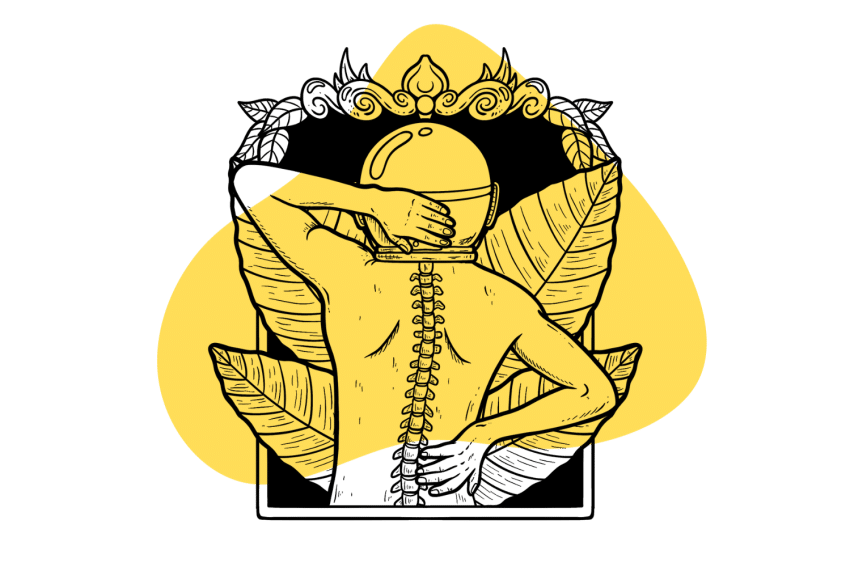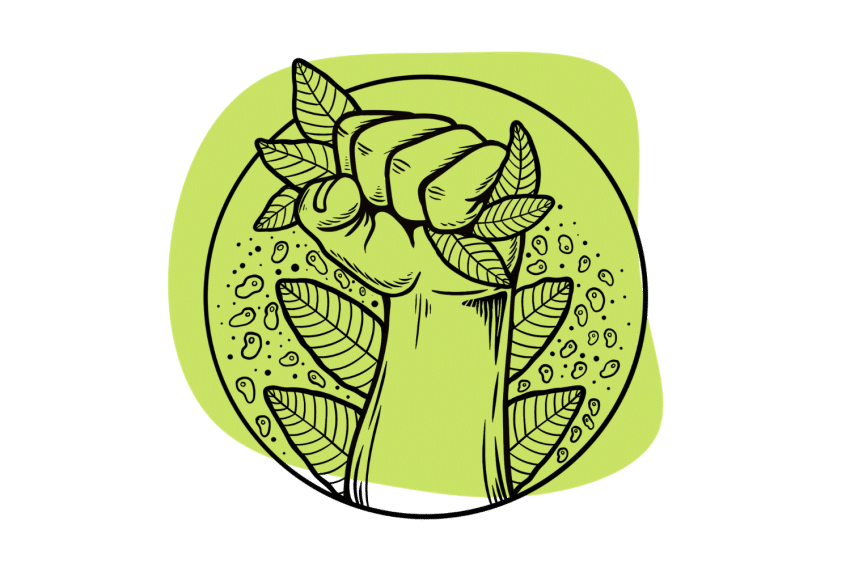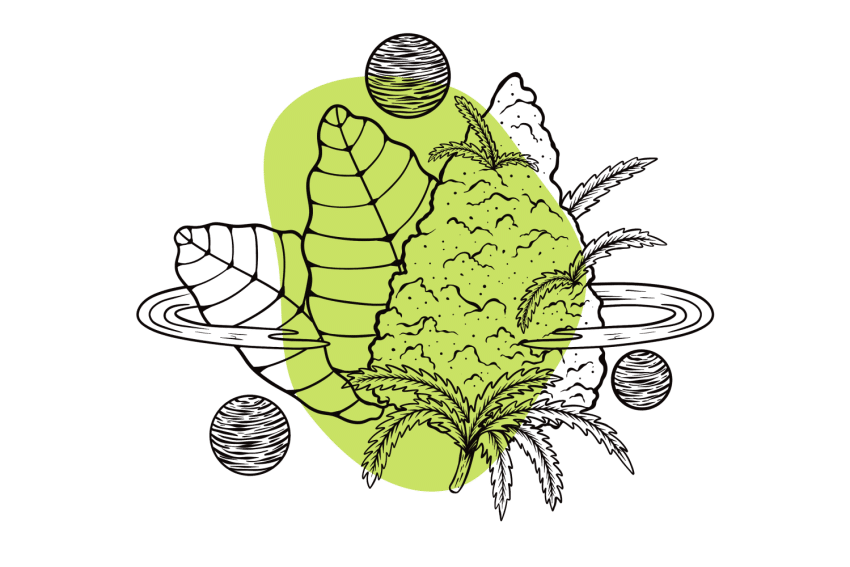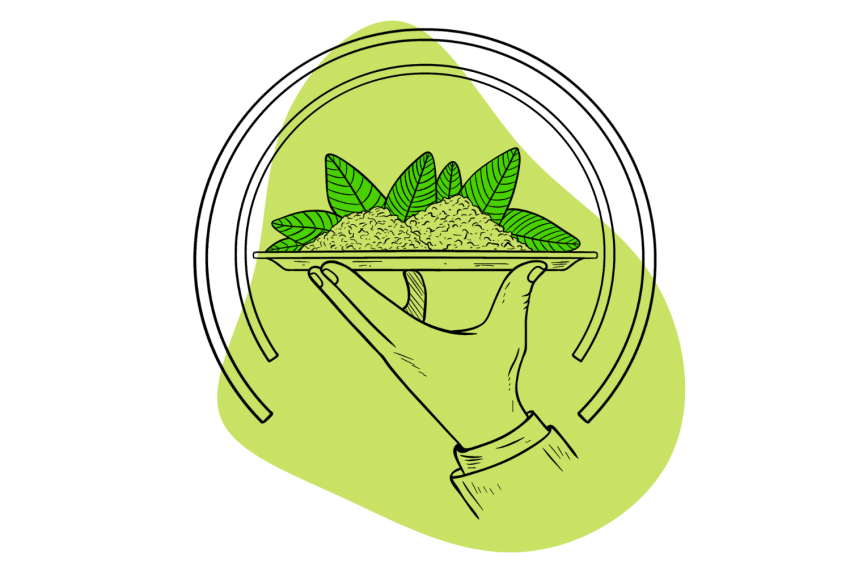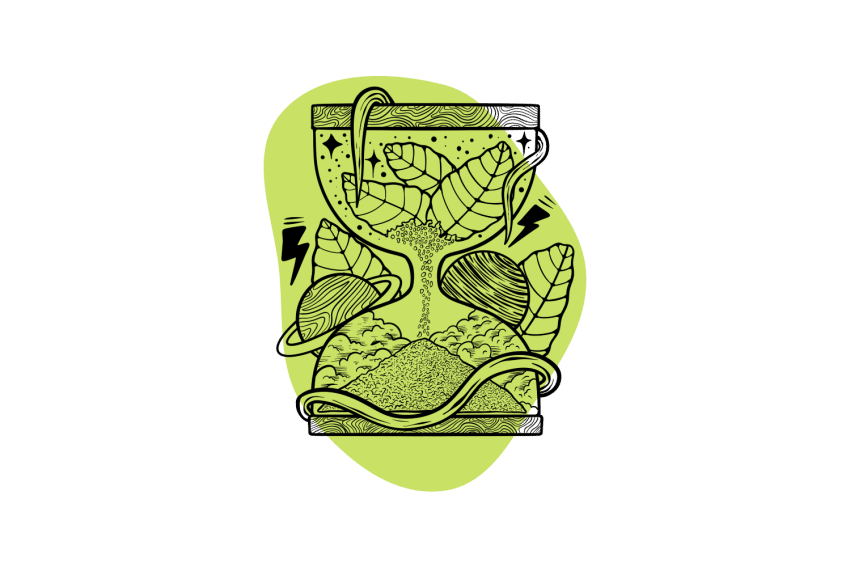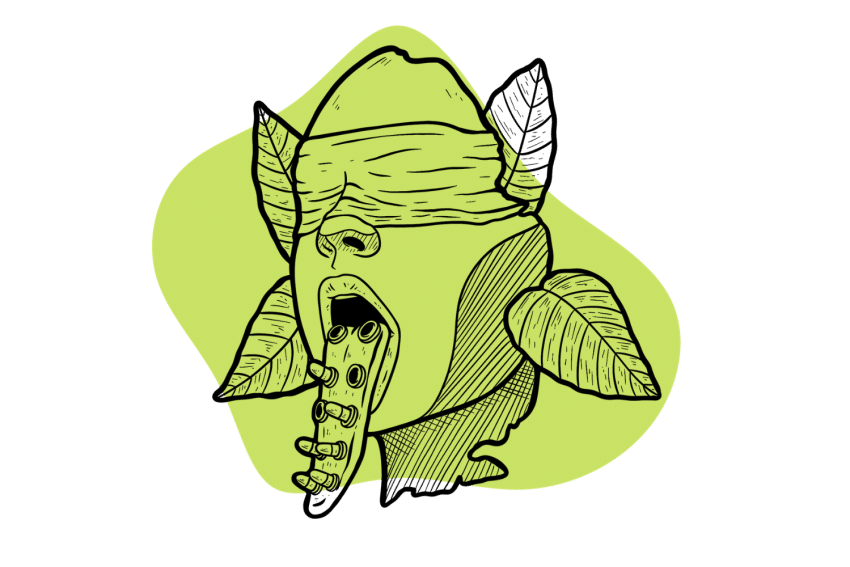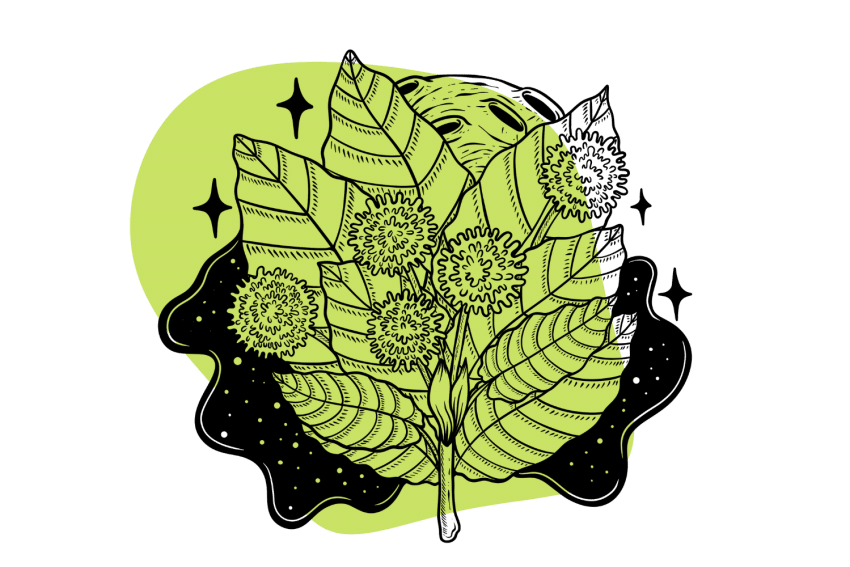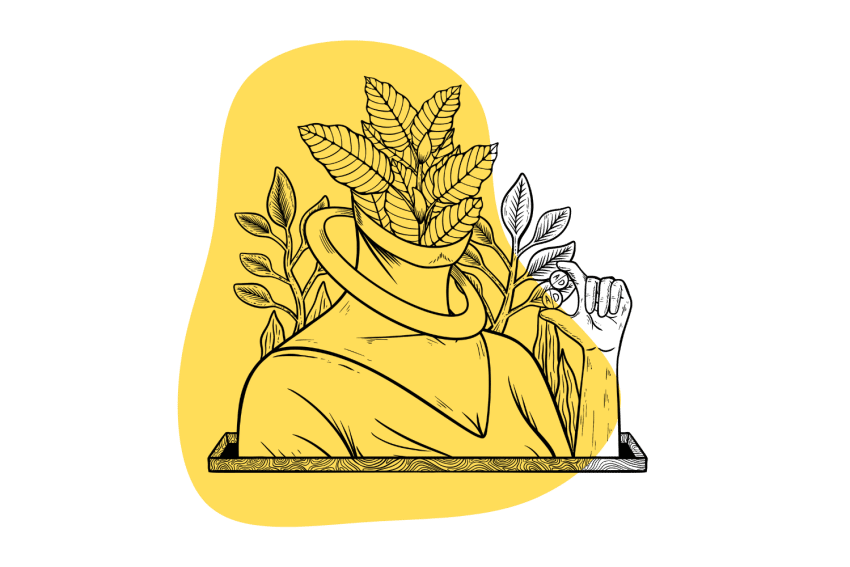What Is Kratom Used For? A Comprehensive Look At This Multifaceted Plant
Kratom is a single plant capable of a myriad of effects — some of which, like energy and sleep, even conflict with each other — here’s how it works and what people use it for.
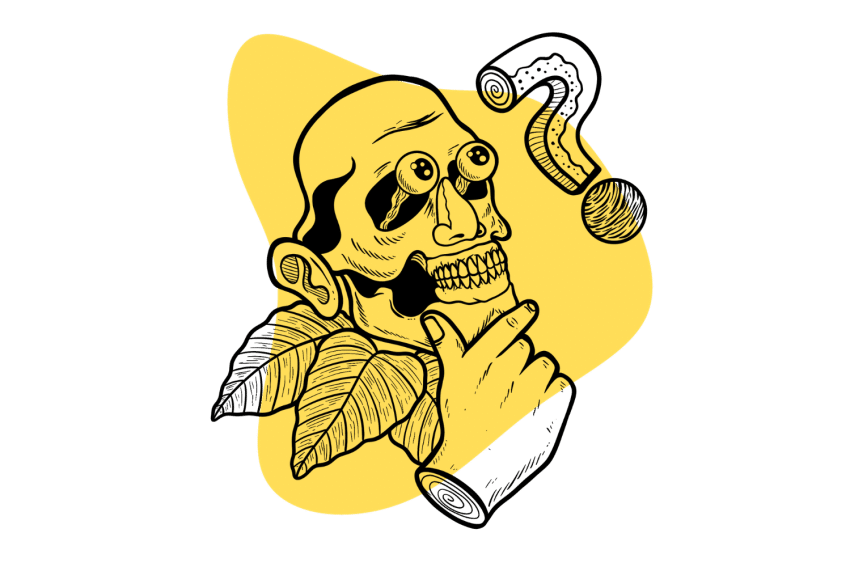
We’ve all had a friend who thinks the solution to every problem in life is a plant, but “plant allies” can help in several elements of our lives. When it comes to kratom (Mitragyna speciosa), there is no shortage of claims about its capabilities.
In this article, we’ll cover the different uses for kratom, including its potential to help:
- Boost energy
- Relieve pain
- Enhance sleep
- Boost mood
- Relieve anxiety/depression
- Ease withdrawal symptoms
- Relax and improve social interactions (including recreational use)
As the list above shows, kratom offers a wide range of benefits — some of which even conflict with one another. This phenomenon is found in other plants, too; take cannabis, for example, which can either energize or relax a person, but kratom is in a league of its own.
There are various factors that account for the distinct applications of kratom; these include:
- Complex Pharmacology — Including the effects on dopaminergic, serotonergic, adrenergic, and opioidergic systems.
- Variations in Alkaloidal Content
- Dose-Dependent Interactions
We’ll also cover some of the historical uses of kratom, including the home remedies and spiritual practices surrounding the plant, before looking to the future.
7 Different Uses for Kratom
Here’s a helpful chart for the common kratom effects, the strain typically associated with them, and the average dosage level:
| Desired Effect | Kratom Strain | Dosage Level |
| Energy | White/Green Vein | 1–4 g |
| Pain Relief | Red Vein | 2–8 g |
| Sleep | Red Vein | 2–8 g |
| Anxiety/Depression | Green/Red Vein | 5–12 g for anxiety2–8 g for depression |
| Withdrawal | Red Vein | Start 1–4 g and increase dosage while decreasing for the drug you’re replacing |
| Relaxation/Recreation | Red Vein | 2–8 g, depending on the desired effect |
Kratom’s effects will vary depending on the strain, dosage, region of origin, and more. It has a complex pharmacology and interacts with several systems within the body to bring on a plethora of changes.
Let’s break these different uses down and go over how kratom achieves these effects:
Using Kratom for Energy
Taking low doses of kratom to achieve energizing effects has been one of the traditional uses of the plant and is still a common practice today. Kratom acts as a stimulant and an opioid and seems to switch which of the two it favors depending largely on the dosage [1].
Some of the alkaloids within kratom interact with dopamine receptors, which are critical for energy, motivation, and reward. These receptors are also targeted by amphetamines — a common pharmaceutical treatment for lack of focus or energy.
While we have yet to fully understand the mechanisms by which kratom boosts energy, larger doses seem to be less beneficial for doing so. However, we do know that white or green strains are better suited for the task.
It seems likely white vein strains better target the dopaminergic and serotonergic systems and spend less time focusing on the opioid receptors. This may be because white vein kratom usually has lower amounts of mitragynine — the predominant opiate alkaloid — compared to red vein kratom.
Still, without any appropriate research behind the question, this remains something we haven’t nailed down just yet.
If you want to use kratom for energy, consider starting with 1–4 grams and see how it feels before slowly working your way up to higher levels. Even with a white vein, taking too high of a dose can wind up reversing the effect you were looking for.
Using Kratom for Pain Relief
Much like other pharmaceutical opiates, kratom’s alkaloid, mitragynine, interacts with the mu-opioid receptors. However, a crucial differentiator for mitragynine is that it only partially activates these receptors, leading to milder and distinct effects of total agonist opiates like morphine.
This has led many to point to kratom alkaloids as potential replacements for opiate medication with fewer side effects. Namely, kratom doesn’t seem to cause respiratory depression and may build tolerance and dependence more slowly than conventional opiates.
Kratom is also addictive, and dependence and tolerance are possible with it. However, withdrawing from kratom is drastically easier than pharmaceutical opiates, which can be deadly on occasion.
Most people recommend red vein strains for pain relief since they generally have the highest amount of mitragynine. Always shoot for the lowest dose possible to achieve the effects you’re looking for.
Typical doses of kratom for pain relief range from 2–8 g.
Using Kratom for Sleep
Similar to using any other opiate to activate opioid receptors, the pain-relieving effects come along with a decent level of sedation. However, dosing kratom for sleep is something you’ll have to take great care of since small doses can boost energy levels and may leave you tossing and turning.
Another important point of note is that while kratom can help people fall asleep, it doesn’t assist with the crucial “rapid eye movement” (REM) stage needed for deep sleep. As such, if the issue is falling asleep, kratom may be beneficial, but it’s not the best option for people who have trouble staying asleep or achieving deeper restful states.
High doses are better for sleep than low ones, but taking too much kratom may lead to more unpleasant side effects and a higher level of tolerance and dependence. It’s essential to start with as low of a dose as possible to achieve the effects you’re looking for and slowly build up from there.
For people looking to use kratom for sleep, we recommend a dosage of around 2–8 g.
Using Kratom for Anxiety/Depression
Since kratom still has so little research behind it, it’s hard to nail down its exact mechanisms of action, but it seems to help manage several mental health symptoms. This includes the potential for antidepressant and anxiolytic (anti-anxiety) effects and a variety of others [2].
Whether it’s the result of interactions with the opioid, dopamine, or even the little-known interactions with serotonin receptors, kratom seems to help. And it’s been helping for some time.
One review from Malaysia — where kratom has historical roots with generations of use — shows even more promise for this. One of the biggest complaints of patients on antidepressants and anxiolytics is the effect it has on their mood and social function, but this may not be the case with kratom [3].
This study found regular use of kratom didn’t result in any negative social effects and was easier to stop or take a break from than other medications. Selective serotonin reuptake inhibitors (SSRIs), by contrast, require a tapering-off period and can lead to agitation and elevated anxiety as a side effect.
Within the study, there was a low rate of depression, anxiety, and other mental health problems among regular kratom users. While it’s impossible to tell if this correlation results from kratom use, it’s encouraging nonetheless.
Doses for anxiety relief will need to exceed the energizing low-dose effect, which can increase anxiety. As such, the normal kratom dosage for anxiety is typically between 5–12 g.
Depression is different, however, and a boost of energy may help elevate mood. Conversely, sedative effects from large doses will make performing tasks even more difficult.
For antidepressant effects, the kratom dose may range between 2–8 g.
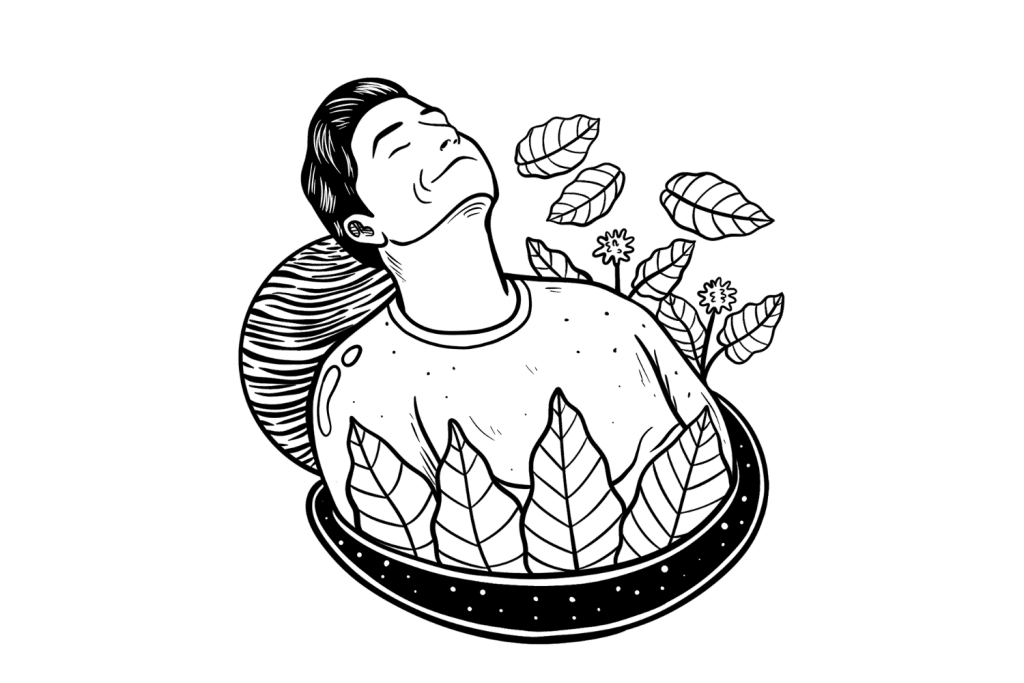
Using Kratom For Mood
Some choose to use kratom to maintain a balanced mood and as a nootropic — a supplement that can enhance memory and cognition. While helping with things like energy, depression, or anxiety alone is enough to do this, there may be even more at play when you consider the dopaminergic effects.
In addition to responding to the dopamine neurotransmitter, some dopamine receptors produce the chemical. Activating these receptors — as kratom likely does [4] — is the main treatment method for psychosis and schizophrenia.
While these are complex conditions with multiple concerns, one of them is an overproduction of dopamine that keeps the brain stimulated without a reason to be so.
On a lighter level, overstimulation from dopamine can lead to higher levels of stress, anxiety, and other negative emotions. In this way, kratom may be useful both for calming down an over-excited mind and for providing elevated levels of happiness in others.
For the vast majority of people, using kratom for mood involves low doses of around 1–4 g to achieve an elevated mood and higher concentration and energy levels.
If you want the alternate effect, calming down an agitated and over-excited mind, a higher dose of 5–10 g is likely a better idea to avoid exacerbating anxiety.
Using Kratom for Withdrawals/Addiction
One of the most significant uses of kratom is to ease the pains of withdrawals and taper off dependence on other drugs. Kratom is a common method for helping to stop or lower the use of opiates, benzodiazepines, alcohol, and more.
For these substances, quitting cold turkey is painful and can even turn deadly. Even if it was just uncomfortable, though, easing withdrawal symptoms can assist greatly in the goal of quitting.
In Malaysia, reporters have found kratom can both ease the symptoms of withdrawal and lower the use of methamphetamine and heroin [5]. There are several implications to and reasons behind this effect, but it’s inherently a good thing if people are successfully replacing a more dangerous drug — even if just occasionally — with a less dangerous one.
Kratom use isn’t without its concerns, but it’s impossible to argue against it being less harmful than heroin or methamphetamine. Some of this may be to alleviate the withdrawal symptoms in between being able to afford the more expensive drugs of choice.
By contrast, without an alternative option, many feel as though they desperately need to find the money or their drug to avoid the painful symptoms of withdrawal. This leads to dangerous behaviors in pursuit of relief from the hellish pain.
Analyzing anecdotal reports in America will show a similar pattern of use for easing withdrawal symptoms [6]. Though it’s not technically an approved method for doing so, kratom operates similarly to other opioid replacement therapies and even offers benefits over some of the other alternatives.
In time, this will likely become one of the most accepted applications of kratom — in some countries, it already is.
Using Kratom for Recreation
While the main uses of kratom revolve around self-treatment of pain and other problems, some seek it out for recreational purposes. People might do this at any dose or with any strain, but it’s important to never mix kratom with alcohol or other drugs.
Some of the ways people use kratom recreationally include:
- Low Dose Recreational Use (1–4 g) — Some people might seek out a boost of energy before a night out or to feel more engaged with people in social settings.
- Moderate Dose Recreational Use (4–7 g) — People can get mild relaxation and euphoria from red vein products and higher boosts of energy for white and some green vein options.
- High-Dose Recreational Use (≥ 8 g) — At higher doses, the effects can mimic the euphoric and relaxing sensations of other opiates. Note: Higher doses bring about elevated side effects and potential harm.
After repeatedly using high doses of kratom, withdrawal symptoms can be harsh. However, they typically reside after 1–3 days [7], which is significantly quicker compared to other opioids like heroin or methadone, which can drone on for up to 20 days [8].
Still, with the addictive potential of kratom and the little-researched potential for toxicity — particularly in large or frequent doses — we’d recommend long breaks between recreational doses.
We humans have been using plants to have fun for centuries, but when we do, we should approach them with respect and with an understanding of their potential for harm.
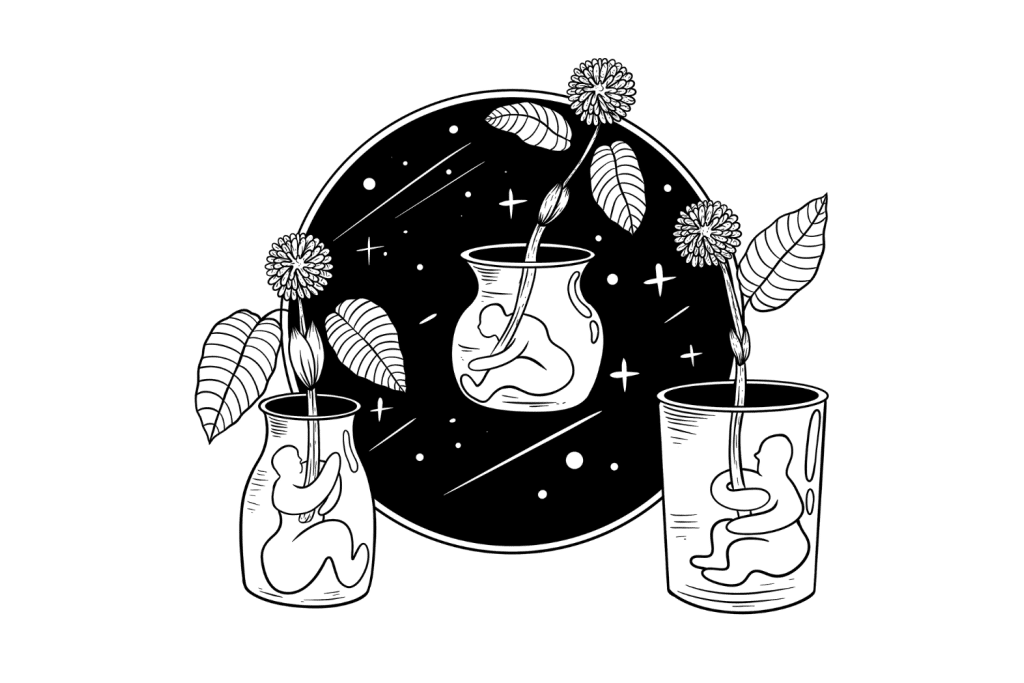
Why Does Kratom Have So Many Uses?
There are several reasons why kratom has variations in its effectiveness and the ways it works; the three most prominent are:
- Complex Pharmacology — Kratom interacts with the dopaminergic, serotonergic, adrenergic, and opioidergic systems, and we still don’t fully understand how. Each of these systems controls or influences several physiological functions in the body and mind.
- Variations in Alkaloidal Content — Plants aren’t held to the same standard as pharmaceutical companies, and their contents are far harder to ascertain. Kratom’s effects are the result of a mixed bag of alkaloids, and the concentrations of each can vary tremendously for a host of reasons.
- Dose-Dependent Interactions — Kratom interacts differently in small doses than it does in larger ones. It’s not like alcohol, where you keep feeling the same effect more intensely. Rather, large doses of kratom can have opposing or entirely different effects from smaller ones.
To add to this, we still don’t have a complete understanding of many elements surrounding kratom, how it works, or everything it interacts with. Compare this to a pharmaceutical approach like morphine, which delivers a single chemical at specific concentrations.
By virtue of being a natural alternative, kratom is inherently going to vary in the effects it delivers and its potency. Let’s take a look at each of these factors in more detail to examine the wide-ranging applicability of this plant.
Complex Pharmacology
Kratom’s activity with the opioid receptors receives great attention when people discuss the plant, but it’s far from its only mechanism of action. Kratom also interacts with adrenergic, dopaminergic, and serotoninergic receptors, and each of these systems works in complex ways with each other as well.
Some opioid receptors — like the mu-opioid receptor mitragynine favors — influence the production and release of dopamine. Others inhibit it or act on various other receptors, neurotransmitters, and signaling pathways within the brain and body.
Other studies show kratom alkaloids can directly influence serotonin receptors and affect the production of adrenaline [9,10].
Here’s more information on the different systems kratom interacts with (we currently know of):
Opioid Receptors and the Regulation of Pain
The opioid system primarily functions as a communication pathway for pain signals, sending messages back and forth from our body and brain. After an opioid agonist occupies the receptor — whether it’s one we create naturally or take from an outside source — it cuts off this communication [11].
The activation of an opioid receptor results in the following changes:
- By blocking the pathway of pain signals to and from the brain, opioids can eliminate our perception of pain.
- Intracellular changes result in the cell restricting chemicals responsible for sending pain messages and boosting others capable of increasing their effectiveness and duration.
- An additional chain forms around the cell, capturing and sequestering messengers responsible for metabolizing the chemical messenger and resetting the receptor
Depending on the type of opioid receptor — mu, delta, or kappa — activation could influence dopamine, serotonin, and/or adrenaline production and release.
Put simply, our body naturally activates these receptors as we need them to, and drugs like heroin can activate them in stronger ways.
Dopamine and the Regulation of Motivation
Dopamine controls various functions throughout the body, but these often revolve around the “reward” mechanism. Dopamine receptors give a boost of energy and excitement with a physiological focus on reinforcing beneficial behaviors [12].
When you’re gearing up for a particularly helpful but lengthy task, it even provides a rewarding boost ahead of time to help see you through. Consider a trip to the gym as an example:
- At first, you can’t seem to bring yourself to go — your brain doesn’t yet know how much it’s going to appreciate your efforts, so it’s not encouraging you to do so.
- After working through it and making it to the gym for your workout, you feel great because your brain is rewarding the behavior and encouraging you to go back.
- Once you’ve gone a few times, you may start to feel energized just at the thought of going to the gym. Dopamine is firing at the idea of doing it because it’s nudging you toward that direction and saying, “There’s more where this came from if you keep it up.”
Another group of dopamine receptors primarily controls memory, physiological functions, and the production of dopamine. Overproduction of this neurotransmitter may lead to psychosis or schizophrenia, while underproduction can cause depression or dysphoria [13].
Respectively, you can think of these as being constantly bombarded with energy for a task you aren’t doing or never feeling joy from anything you accomplish.
Serotonin and the Regulation of Mood
Serotonin, often considered the “happiness” molecule, is responsible for our feelings of euphoria and for regulating our happiness [14].
Low levels of serotonin have been associated with depression for a long time, and our pharmacological approaches showcase this. One of the first breakthroughs in depression treatment was the inhibition of monamine oxidase enzymes responsible for breaking chemicals down before they can reach their receptor.
Since this enzyme also plays a major role in blood pressure and digestion, this was an extreme solution.
Many evolutions later, we’ve largely moved on to restricting the “reuptake” of serotonin on select receptors. This is the process by which receptors capture some of the serotonin they release, thereby inhibiting them from making more for a short time, so blocking this process enables the production to keep going.
Selective serotonin reuptake inhibitors (SSRIs) are now the gold standard for treatment, but they’re still far from perfect. Since we still have trouble understanding the importance, production, and implications of serotonin, we may consider this extreme in the future as well.
Additionally, the symptoms and causes of depression are so complex one neurotransmitter cannot be the sole cause of it. Societal factors, genetics, diet, and many other factors can contribute to the deterioration of mental health [15].
Though serotonin dysregulation is often prevalent in depression patients, it could just as easily be a result of other factors rather than a direct cause. This means we’re not even sure of where this relationship becomes important yet; we’ve only noticed a correlation.
Adrenaline and the Regulation of Pain and Fight-Or-Flight
After experiencing pain, part of the body’s natural response is to trigger a release of epinephrine — also known as adrenaline. This neurotransmitter is responsible for the symptoms of a fight-or-flight response or a panic attack (e.g., heart palpitations, sweating, nervousness, increase in blood pressure, among others) [16].
When the brain releases adrenaline after an injury, it helps mask the pain as your energy takes over. For life-saving moments, this can help you fight through or escape a dangerous situation, even when injured.
If you felt pain the moment a person hit you, fights would all resolve by who threw the first punch, as continuing after would be excruciating.
Instead, adrenaline rushes in to keep your blood pumping and body moving, giving a critical last boost of energy so you can finish off your fight or safely run from it. High levels of adrenaline may lead to increased irritability and anxiety.
The Endocannabinoid System and Homeostasis
When something falls out of balance, our endocannabinoid system is a major component of bringing it back. This state of balance within the body is also known as homeostasis, and it’s critical for our day-to-day functioning.
Cannabis is famous for communicating with this system, but we produce our own cannabinoids as well, which can mimic their effects. Additionally, there are a variety of other compounds with influence over these receptors.
Kratom primarily seems to affect CB1 receptors — similar to marijuana — which are throughout the brain and central nervous system [17]. This may result in a similar pain-relieving effect to the main component of cannabis, delta-9 tetrahydrocannabinol (THC).
Unfortunately, it may also be a cause of memory impairment, as is common with THC. This is a relatively unknown interaction for kratom, and there is little research behind it, but it may be something we later understand to be a critical component of its action.
Variations in Alkaloidal Content
There are never two kratom plants alike, and their particular alkaloid content cannot be standardized as with pharmaceutical medications.
A recent study using commercially available kratom samples found differences in mitragynine levels varied by 400%. Another little-known alkaloid, speciofoline, varied by around 900% [18].
Since we have yet to nail down exactly how the alkaloids all work together, even minor shifts may result in significant changes. As a result, kratom has an inherent level of unpredictability even if there are some clusters of similar effects among similar products.
These differences likely have a large impact in ways we have yet to nail down, and we’ll need far more research to do so.
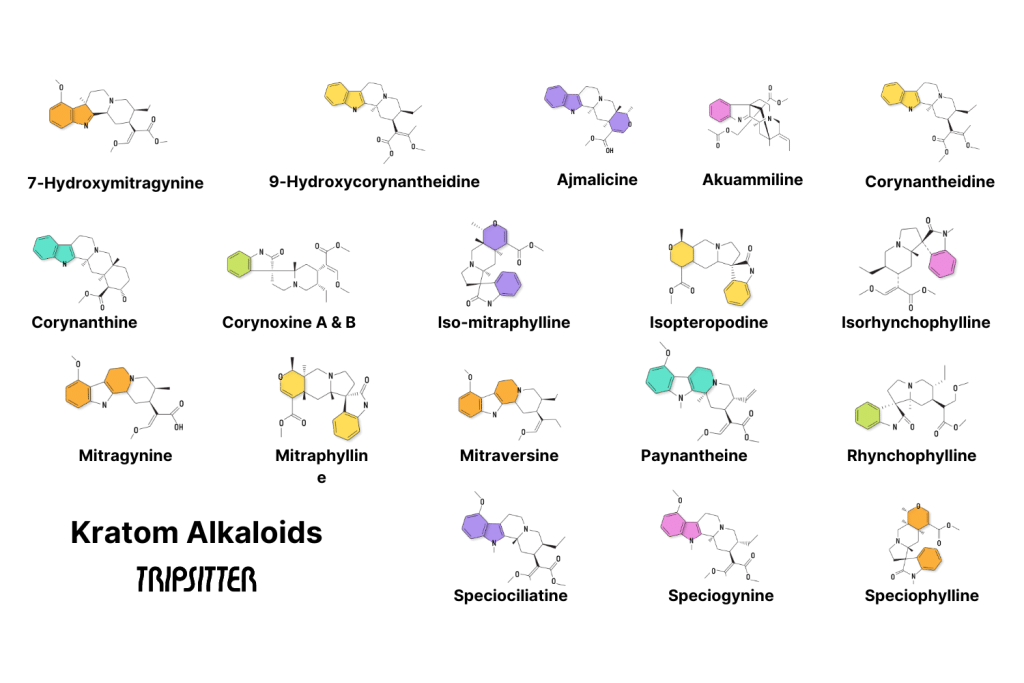
Dose-Dependent Interactions
Unlike some drugs, kratom doesn’t simply increase its effectiveness with higher doses. Instead, it can have different effects when taken in small amounts versus larger ones — being a stimulant for the former and sedative for the latter.
Cannabis is another great example of this dose-dependent effect. It’s relaxing and euphoric in small amounts, but larger quantities can trigger paranoia and anxiety.
Kratom’s dose-dependent mechanism isn’t something many have elucidated on, but it’s likely the result of increasingly targeting opioid receptors.
Activating smaller amounts of these receptors may stimulate dopamine release and mild relaxation through opiate receptor inhibition. Larger-scale activity can feel overwhelmingly tiring, cutting off the communication between your brain and muscles in many ways.
While we don’t have a definitive answer for the reasons behind this, it’s a phenomenon as old as the use of the plant itself.
What Was Kratom Used For Historically?
Traditional use of kratom involves many of the same reasons we seek the plant out today. People working laborious jobs would seek it out for the energizing and pain-relieving benefits along with the occasional recreational dose and even withdrawal mitigation [1].
We don’t know how long kratom has been a part of Southeast Asian culture, but we do know its use dates back hundreds of years [19]. Some of the other ailments kratom has been a “household remedy” for include fever, cough, hypertension, and diabetes.
Other less common reports include using kratom as a dewormer, topical ointment for wounds, appetite suppressant, and improving sexual performance. It has often provided a similar social lubricating effect in social interactions as you might expect of alcohol.
In some places, kratom is even involved in part of religious ceremonies and is sometimes included as a part of a sacrificial offering.
Much of the media surrounding kratom today lump it together with other opiates to scare away users. Kratom’s potential harms aren’t something we should overlook, but they’re often many times less than even alcohol.
What’s The Future Look Like for Kratom Use?
It’s hard to speculate on the future when our present stance is still so cloudy, but emerging research is pointing to the potential healing power of kratom. Most of our current pain-relieving medications derive from morphine — another natural compound found in the opium poppy.
As such, it’s not far-fetched to think kratom could provide a similar pathway for research. Alkaloids within kratom interact with receptors in ways we’ve never seen before and offer a lot of key pharmacological mechanisms we may have never even considered.
Additionally, we still have a long way to go before we can even claim to understand the way kratom works or how we can best utilize it. Until then, however, the future is looking very bright for mitragynine and several other kratom alkaloids.
References
- Eastlack, S. C., Cornett, E. M., & Kaye, A. D. (2020). Kratom—Pharmacology, Clinical Implications, and Outlook: A Comprehensive Review. Pain and Therapy, 9(1), 55–69. https://doi.org/10.1007/s40122-020-00151-x
- Swogger, M. T., & Walsh, Z. (2018). Kratom use and mental health: A systematic review. Drug and Alcohol Dependence, 183, 134–140. https://doi.org/10.1016/j.drugalcdep.2017.10.012
- Singh, D., Müller, C. P., Vicknasingam, B. K., & Mansor, S. M. (2015). Social Functioning of Kratom (Mitragyna speciosa) Users in Malaysia. Journal of Psychoactive Drugs, 47(2), 125–131. https://doi.org/10.1080/02791072.2015.1012610
- Vijeepallam, K., Pandy, V., Kunasegaran, T., Murugan, D. D., & Naidu, M. (2016). Mitragyna speciosa Leaf Extract Exhibits Antipsychotic-Like Effect with the Potential to Alleviate Positive and Negative Symptoms of Psychosis in Mice. Frontiers in Pharmacology, 7, 464. https://doi.org/10.3389/fphar.2016.00464
- Singh, D., Narayanan, S., Vicknasingam, B., Prozialeck, W. C., Smith, K. E., Corazza, O., Henningfield, J. E., & Grundmann, O. (2022). The Use of Kratom (Mitragyna speciosa Korth.) Among People Who Co-use Heroin and Methamphetamine in Malaysia. Journal of Addiction Medicine, 16(2), 223. https://doi.org/10.1097/ADM.0000000000000876
- Smith, K. E., Rogers, J. M., Schriefer, D., & Grundmann, O. (2021). Therapeutic benefit with caveats?: Analyzing social media data to understand the complexities of kratom use. Drug and Alcohol Dependence, 226, 108879. https://doi.org/10.1016/j.drugalcdep.2021.108879
- Singh, D., Müller, C. P., & Vicknasingam, B. K. (2014). Kratom (Mitragyna speciosa) dependence, withdrawal symptoms, and craving in regular users. Drug and Alcohol Dependence, 139, 132–137. https://doi.org/10.1016/j.drugalcdep.2014.03.017
- Withdrawal Management. (2009). In Clinical Guidelines for Withdrawal Management and Treatment of Drug Dependence in Closed Settings. World Health Organization. https://www.ncbi.nlm.nih.gov/books/NBK310652/
- Chen, Y. (2023). Polypharmacology of Mitragyna Speciosa (“Kratom”) Alkaloids. https://ursa.mercer.edu/handle/10898/13702
- Hanapi, N. A., Chear, N. J.-Y., Azizi, J., & Yusof, S. R. (2021). Kratom Alkaloids: Interactions With Enzymes, Receptors, and Cellular Barriers. Frontiers in Pharmacology, 12, 751656. https://doi.org/10.3389/fphar.2021.751656
- Al-Hasani, R., & Bruchas, M. R. (2011). Molecular Mechanisms of Opioid Receptor-Dependent Signaling and Behavior. Anesthesiology, 115(6), 1363–1381. https://doi.org/10.1097/ALN.0b013e318238bba6
- Mishra, A., Singh, S., & Shukla, S. (2018). Physiological and Functional Basis of Dopamine Receptors and Their Role in Neurogenesis: Possible Implication for Parkinson’s disease. Journal of Experimental Neuroscience, 12, 1179069518779829. https://doi.org/10.1177/1179069518779829
- Ford, C. P. (2014). The Role of D2-Autoreceptors in Regulating Dopamine Neuron Activity and Transmission. Neuroscience, 282, 13–22. https://doi.org/10.1016/j.neuroscience.2014.01.025
- Bamalan, O. A., Moore, M. J., & Al Khalili, Y. (2023). Physiology, Serotonin. In StatPearls. StatPearls Publishing. http://www.ncbi.nlm.nih.gov/books/NBK545168/
- Remes, O., Mendes, J. F., & Templeton, P. (2021). Biological, Psychological, and Social Determinants of Depression: A Review of Recent Literature. Brain Sciences, 11(12), 1633. https://doi.org/10.3390/brainsci11121633
- Wortsman, J. (2002). Role of epinephrine in acute stress. Endocrinology and Metabolism Clinics of North America, 31(1), 79–106. https://doi.org/10.1016/S0889-8529(01)00024-X
- Iman, I. N., Ahmad, N. A. Z., Mohd Yusof, N. A., Talib, U. N., Norazit, A., Kumar, J., Mehat, M. Z., Hassan, Z., Müller, C. P., & Muzaimi, M. (2021). Mitragynine (Kratom)-Induced Cognitive Impairments in Mice Resemble Δ9-THC and Morphine Effects: Reversal by Cannabinoid CB1 Receptor Antagonism. Frontiers in Pharmacology, 12, 708055. https://doi.org/10.3389/fphar.2021.708055
- Todd, D. A., Kellogg, J. J., Wallace, E. D., Khin, M., Flores-Bocanegra, L., Tanna, R. S., McIntosh, S., Raja, H. A., Graf, T. N., Hemby, S. E., Paine, M. F., Oberlies, N. H., & Cech, N. B. (2020). Chemical composition and biological effects of kratom (Mitragyna speciosa): In vitro studies with implications for efficacy and drug interactions. Scientific Reports, 10(1), Article 1. https://doi.org/10.1038/s41598-020-76119-w
- Singh, D., Narayanan, S., Vicknasingam, B., Corazza, O., Santacroce, R., & Roman-Urrestarazu, A. (2017). Changing trends in the use of kratom (Mitragyna speciosa) in Southeast Asia. Human Psychopharmacology: Clinical and Experimental, 32(3), e2582. https://doi.org/10.1002/hup.2582

